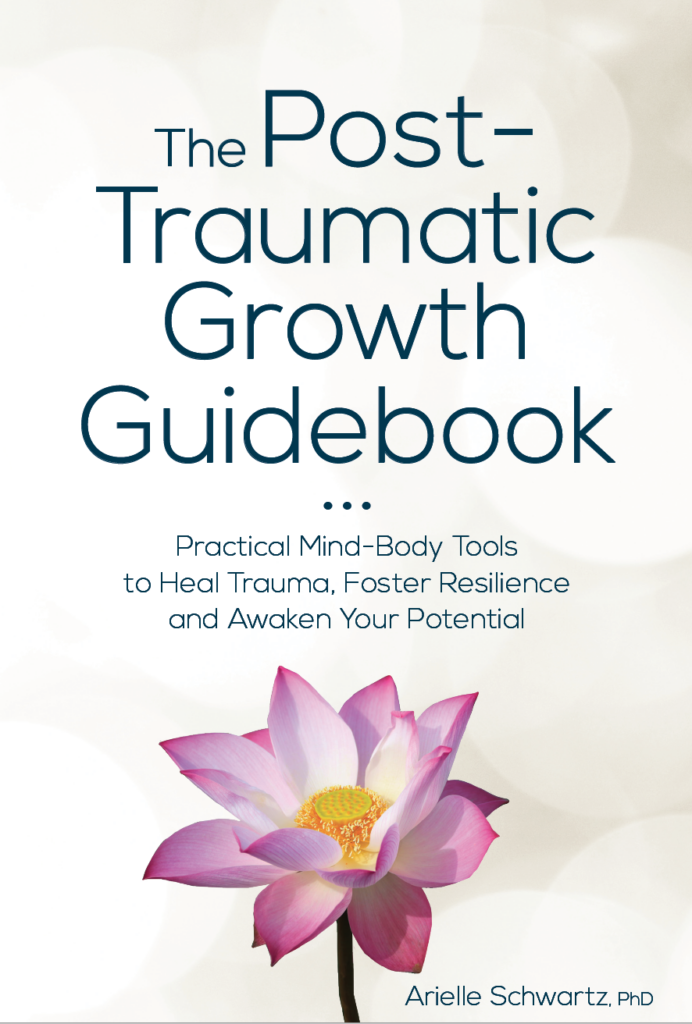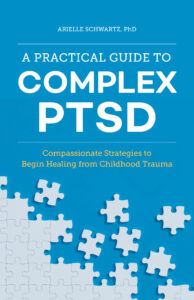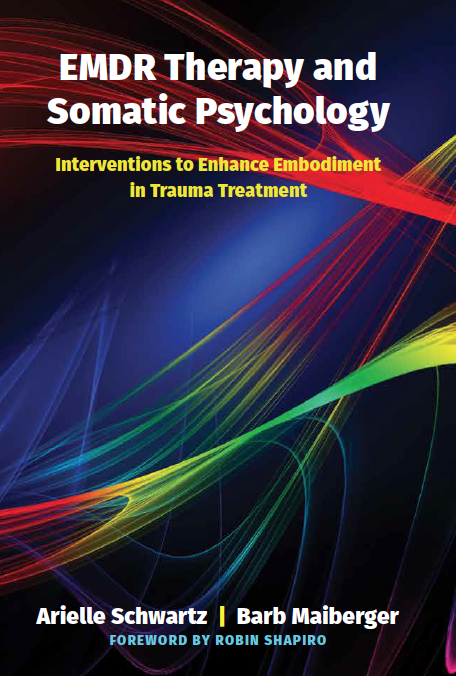
Do you ever feel as though only some of your emotions or needs are acceptable? Do you push away parts of yourself that you do not want others to see? In truth, all parts of our self are real, important, and necessary. However, it is common to experience conflicts between opposing emotions or needs. For example, you might have a part of you that longs to be close to a loved one while another part feels fearful of intimacy. Sometimes, these competing needs can become polarized within us, leading to anxiety, indecision, procrastination, or self-sabotaging behaviors.
If you have a history of chronic, repeated trauma, you might feel a greater divide between different parts of the self and a greater likelihood of dissociative symptoms. You might feel an unrelenting need to be perfect, be plagued by a harsh inner critic, or exhibit self-aggressive tendencies that lead you to feel at war with yourself. You might also feel as though you are cut off from your feelings or as if you are going through the motions of your life without meaning or a sense of connection. Maybe you alternate between feeling disconnected from your emotions and over identifying with your pain.
And, when we cannot stay present to our emotions, we are much more likely to try to control other people’s behaviors.
Relate? Parts work therapies can help you heal. Let’s take a closer look…

There are several different approaches to parts work therapies, including ego state therapy (Watkins & Watkins, 1997), Internal Family Systems therapy (IFS; Schwartz, 1997), structural integration theory (van der Hart et al., 2006), and Gestalt therapy (Perls, 1992). All of these models of parts work therapy relies on several important ingredients.
There may be times when we feel younger than our current age, such as when we return to visit our childhood home. This “inner child” connects us to the emotions and sensations related to events or memories from childhood. Additionally, we tend to internalize our relational experiences with parents and primary caregivers. That’s because when we attach to another person, they become a part of us.
In Gestalt therapy, this process is called introjection, which is defined as adopting or incorporating the behaviors and attitudes of another person so strongly that they can no longer be separated from our own sense of self. Introjection can be thought of as a loss of boundaries between yourself and another, or a loss of the self. As a result, it may be difficult to differentiate between this sense of “other” and our own identity. For example, a critical parent might become the voice of our own self-critic, or a neglectful parent might lead us to dismiss our own or other’s feelings and needs.

Or if you are someone who experienced abuse in childhood, you might overidentify with the abuser. This can manifest as self-loathing, negative self-talk, self-harm behaviors, and urges to act aggressively toward others.You can think of introjection as the process that occurs when children form an attachment to a parent or caregiver even when that person is also the source of pain, fear, confusion, or rejection.
You might also have relied heavily upon dissociation. Reminders of the trauma typically exist within the body. Therefore, you may have had to disconnect from your sensations in order to survive. At times, you might feel disoriented or as if you are living in a fog. However, you might also have a part of you that is still living as if the frightening events from the past are still happening or could easily happen again. However, because this part carries the intolerable memories of the past, it is often exiled from awareness.

Parts work therapies address internal conflicts by helping you gain access to the vulnerable exiled parts of yourself that are often hidden underneath your protective defenses. In time, you can help these exiled parts release their burdens. However, even if you do want to make room for your emotions, you may feel blocked by a part who criticizes, rejects, or blames the part of you who is vulnerable. Or you might feel the need to manage your distress by seeking a sense of control, by needing to be perfect, or by staying excessively busy. While it might seem counterintuitive, you can think of this critical or controlling part as a protector who has been working hard to shield you from feeling your pain.
Importantly, you are not trying to get rid of this protective part but you might explore asking it to step back for the time being. Rather than casting off this part, I invite you to reflect upon the ways that this part has functioned to protect you. Perhaps you might offer appreciation to this part for its job. If you weren’t able to be vulnerable when you were a child, this part may have helped you maintain a sense of control. Now ask yourself whether it is still necessary to protect yourself in this way. Might it be safe to soften your defenses?
One way parts work therapies help to release the burdens held by exiled parts is to connect to an inner source of wisdom that you carry within you. This involves returning home to your adult, presented-centered self which is always available to support your healing journey. You know that you are connected to your center when you feel calm, clearheaded, and courageous. Once you are connected to your wise self, you are able to tap into your intuition and your intellect. This allows your adult self to turn toward all parts of yourself with curiosity and compassion, which is a process that allows you to attend to and heal the wounds from your past.

There are times when you might feel dispersed, or lost to yourself. One of the paths home is through the senses. For me, this practice is supported by spending time in nature:
A brisk walk in the snow and the chill in the air woke up my skin. And, the moist warmth of my own breath greeting the cool air created an alchemical spark of light. The sound of the water below the ice awakens a curiosity deep inside. I am drawn to sit beside the creek and greet a familiar stillness; one that settles my awareness downward into my heart.
Now, I can sense the heavy blanket of grief that is the undercurrent to my disorientation. Even though these emotions have an inherent weight, they are welcome, because they allow me to locate myself. A heart centered, spontaneous meditation begins to flow. Melting the ice of my defenses.
Returning isn’t always an easy path…and it isn’t permanent. Rather, this is a practice that I must revisit frequently. That said, I am so deeply grateful to know the way home.
Sometimes returning occurs by tapping into the beauty of nature, sometimes it is the perfect song on a playlist, or maybe it happens on the yoga mat. Returning is often supported when another person’s kind eyes, warm smile, and soft voice welcome us home.
Take a moment and ask yourself, what helps you come home to yourself?

The goal of parts work therapies is to realize and integrate the disowned emotions or traumatic memories held by exiled parts of the self. This helps take personal responsibility now to repair ruptures from events that we experienced in the past.
You can think of this as learning to travel through time and revisit events from time in our lives that remain unresolved. For example, a series of events brought back memories from when I was 15. So, I time traveled in my mind back to 1987. Since this was one of the tougher years of my life, a time when I felt as though I was drowning in a sea of shame, I took this journey with the wise counsel of another therapist. I touched into the pain held by that younger me. I finally was able to grieve and let go of the heavy weights that I carried for over 30 years in my body and mind.
Little did I know then, that I would rise up again, like a Phoenix. I didn’t know how many important lessons would be learned or that I would find courage. I didn’t know that I would grow up and find beauty in myself. And, that my inner work would also allow me to guide others toward their inner light. As a time traveler, now I know that life had so much more in store for me. That I would find love. That I was always worthy of love.

In order to heal, it is important to acknowledge the pain that you felt as a child. This parts work therapy healing strategy allows you to imagine new healing or reparative experiences that can help you develop a nurturing relationship with your younger self. Remember that it can be helpful, especially when healing childhood trauma, to work with a caring therapist.
Take a moment to recall a memory of a time in your life when you when you could have benefitted from the caring attention of another person. Where were you? How old were you? Were you alone or with others? What made this time so difficult? What emotions were you feeling then? Now, from the perspective of your adult self, can you imagine what you might have needed in that time?
Imagine your present-day self walking into that scene and caring for your younger self. How does it feel to know that these emotions are now understood and seen? Is there anything that you would like to say to your younger self? Is there anything else you might do to offer a sense of comfort, support, or acceptance for that younger you? Take your time with this process until you feel a sense of completion. What do you notice now as you offer this care to this part of yourself?
“With practice, we can see that our wounded child is not only us. Our wounded child may represent several generations. Our mother may have suffered throughout her life. Our father may have suffered. Perhaps our parents weren’t able to look after the wounded child in themselves. So when we’re embracing the wounded child in us, we are embracing all the wounded child in our past generations. This practice is not a practice for ourselves alone, but for numberless generations of ancestors and descendants.”
~Thich Nhat Hanh

You might also like The Post Traumatic Growth Guidebook. Within this book, you will find an invitation to see yourself as the hero or heroine of your own life journey. A hero’s journey involves walking into the darkness on a quest for wholeness. This interactive format calls for journaling and self-reflection, with practices that guide you beyond the pain of your past and help you discover a sense of meaning and purpose in your life. Successful navigation of a hero’s journey provides opportunities to discover that you are more powerful than you had previously realized. Click here to order the book on Amazon.

And, in The Complex PTSD Workbook, you’ll learn all about Complex PTSD Recovery and gain valuable insight into the types of symptoms associated with unresolved childhood trauma, while applying a strength-based perspective to integrate positive beliefs and behaviors. Click here to order.

A Practical Guide to Complex PTSD: Compassionate Strategies for Childhood Trauma, which is meant to provide compassionate support for the process of healing from childhood trauma. You can think of it as a lantern that will illuminate the dark spaces and provide a sense of hope in moments of despair. The practical strategies you will learn in this book are taken from the most effective therapeutic interventions for trauma recovery. You will learn the skills to improve your physical and mental health by attending to the painful wounds from your past without feeling flooded with overwhelming emotion. My wish is to help you discover a new sense of freedom. The traumatic events of your past no longer need to interfere with your ability to live a meaningful and satisfying life. Click here to Order on Amazon.

For therapists, The EMDR Therapy and Somatic Psychology book, teaches you how to integrate two of the best known trauma recovery modalities into your practice. Click to order it here and increase your toolbox for healing using this integrative and effective approach to healing.

Dr. Arielle Schwartz is a licensed clinical psychologist, wife, and mother in Boulder, CO. She offers trainings for therapists, maintains a private practice, and has passions for the outdoors, yoga, and writing. She is the developer of Resilience-Informed Therapy which applies research on trauma recovery to form a strength-based, trauma treatment model that includes Eye Movement Desensitization and Reprocessing (EMDR), somatic (body-centered) psychology and time-tested relational psychotherapy. Like Dr. Arielle Schwartz on Facebook,follow her on Linkedin and sign up for email updates to stay up to date with all her posts.

Arielle Schwartz, PhD, is a psychologist, internationally sought-out teacher, yoga instructor, and leading voice in the healing of PTSD and complex trauma. She is the author of five books, including The Complex PTSD Workbook, EMDR Therapy and Somatic Psychology, and The Post Traumatic Growth Guidebook.
Dr. Schwartz is an accomplished teacher who guides therapists in the application of EMDR, somatic psychology, parts work therapy, and mindfulness-based interventions for the treatment of trauma and complex PTSD. She guides you through a personal journey of healing in her Sounds True audio program, Trauma Recovery.
She has a depth of understanding, passion, kindness, compassion, joy, and a succinct way of speaking about very complex topics. She is the founder of the Center for Resilience Informed Therapy in Boulder, Colorado where she maintains a private practice providing psychotherapy, supervision, and consultation. Dr. Schwartz believes that that the journey of trauma recovery is an awakening of the spiritual heart.